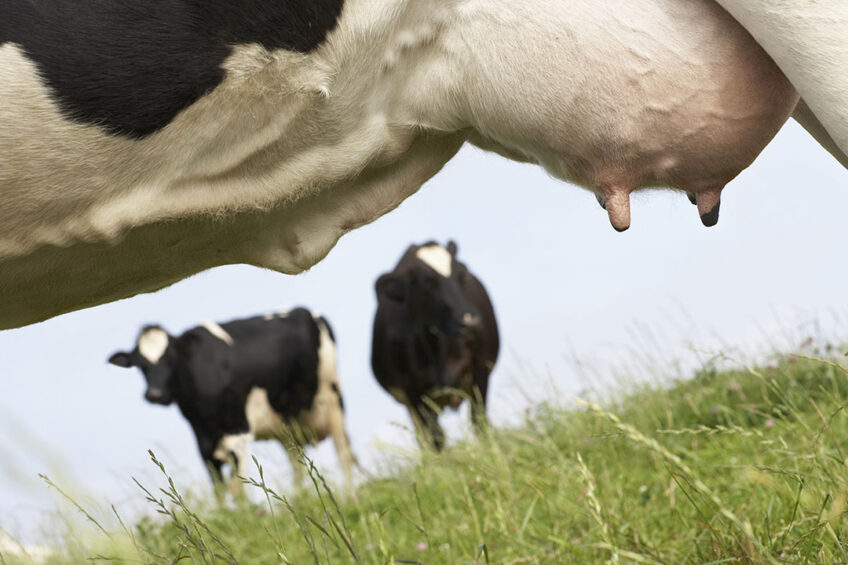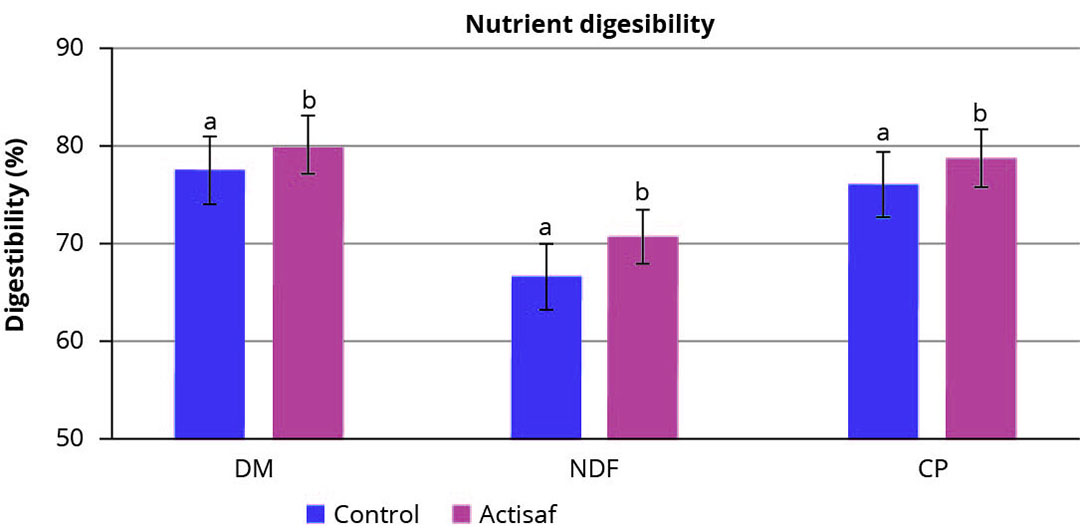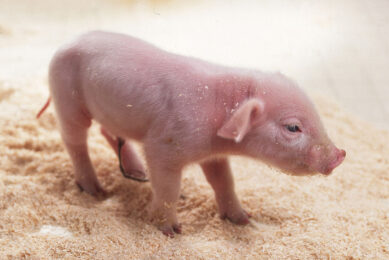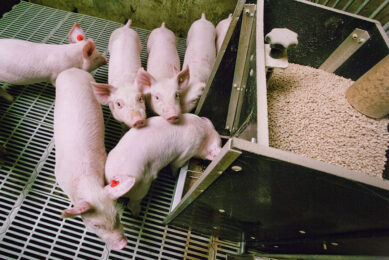Better feed efficiency for more sustainable dairy farming

Sustainability in livestock farming is a comprehensive term which can be defined in many ways. It focuses on how we raise animals, the resources used, animal welfare, the profitability of the farmer, and, above all, the efficiency of the farm. All those elements determine the impact of farming on society and the environment.
We can describe sustainable dairy farming as producing milk in the most efficient way with respect to animal welfare and having minimal impact on the environment, while maximising the farmer’s profit.
We can identify several aspects of sustainability when we speak about dairy farming:
Feed efficiency can be assessed by measuring the amount of energy-corrected milk produced in return for a given quantity of feed, calculated according to DMI. Feed efficacy can be measured either by increasing the energy-corrected milk produced from a set quantity of feed or by producing a set quantity of milk from a reduced amount of feed (Table 1). Improving feed efficacy in relation to dairy cows has a direct impact on a farmer’s profitability and the farm’s carbon footprint. We can improve feed efficacy in different ways. We can use genetic selection to produce more efficient animals. We can optimise feed quality by providing higher quality raw materials and an optimal diet formulation through precision feeding. We can use probiotics and additives to optimise rumen fermentation to increase diet digestion. We can also work on improving welfare and reducing stress, as stress and diseases have a direct and important impact on dairy cow efficiency. As we cope with less available resources, constantly changing weather patterns and increasing feed costs, improving feed efficiency has become one of the most important aspects of sustainable dairy farming.
Environmental impact is a huge topic when we discuss ruminants, especially dairy cows. The dairy sector has been under a magnifying glass for many years regarding its effect on the environment, in particular its contribution to the emission of greenhouse gasses. Reducing methane emissions from the rumen has become a primary goal in relation to dairy nutrition, but it is not an easy task. There are different ways to reduce the carbon footprint of the dairy sector, such as through genetic selection, the direct inhibition of methane production, improving feed efficiency and achieving better diet digestibility. Improving feed efficacy helps to reduce the forage needed per kilogram of milk, leading to less land usage and, therefore, a lower carbon footprint
Animal welfare relates to improving cow comfort and health by optimising housing conditions, reducing stress, and providing sufficient nutrients for maintenance and milk production. Cows with less stress and better health are more efficient and produce more milk. One of the most common causes of stress on dairy farms is heat stress, which is becoming increasingly important with climate change. Another common stress factor is overcrowding, which is more often observed than we might think. Overcrowding is often caused by increasing the herd size without providing new housing in time. The improper management of fertility can also be a problem, leading to overcrowding in transition pens during intense calving periods. Calving, in general, is a major focus of dairy cow stress, especially in relation to metabolic diseases, milk loss and low feed efficiency.
Calving, overcrowding, and heat stress can easily happen at the same time, prompting the need for special attention by the farmer. Improving housing, providing good air flow and better cooling, supplying high quality diet during stress periods, and supplementing with probiotics, can all help to reduce stress, improve animal welfare and secure better efficiency in dairy cows.
Farmer profit is usually less discussed when we talk about sustainability. We tend to focus on welfare, efficiency, and the environment, forgetting that farm profits are at the core of sustainable dairy production. To be able to invest in new systems that improve welfare and reduce farming’s carbon footprint, farmers must be profitable, first and foremost. One way to help farmers improve their profitability is to focus on feed management and feed efficiency, given that feed costs represent around 70% of the financial outlay associated with dairy farming. Improving feed efficacy helps the farmer to produce more milk from a set amount of feed, thereby increasing his margin.
Figure 1 – Actisaf helps significantly ameliorate feed digestibility by the dairy cow.

Probiotics play an important role in achieving more sustainable dairy farming. Some probiotics stabilise the rumen and hindgut microbiota, delivering better feed efficiency as a result. In this context, the yeast-based probiotic, Actisaf SC47, is a very efficient gut microbiota stabiliser. It diminishes the risk of ruminal acidosis and ameliorates fibre degradation. Supplementing yeast probiotics in dairy cows helps to improve feed efficiency significantly (Figure 1). It also leads to more sustainable milk production with a positive ROI for the farmer of 6:1.
References are available on request.







